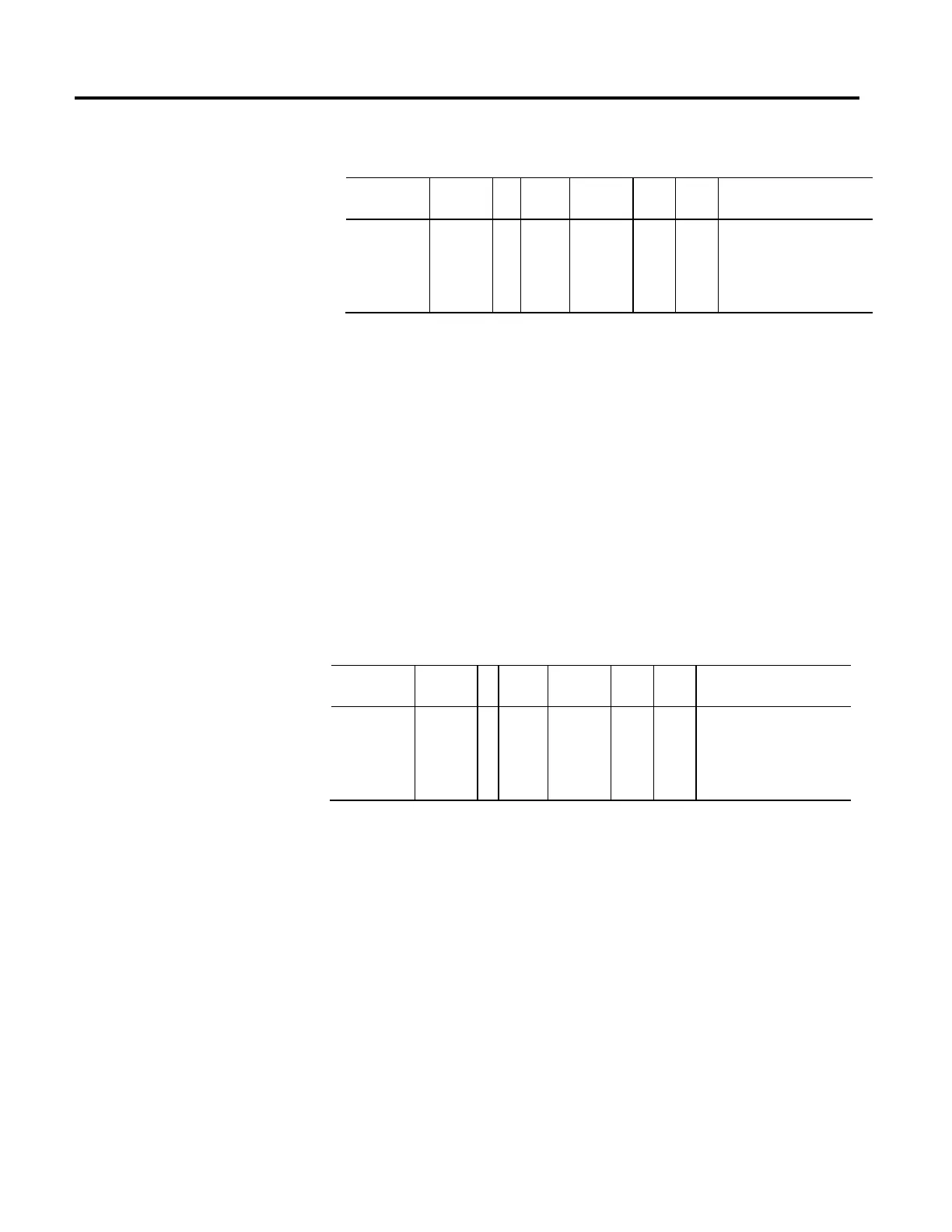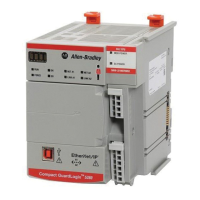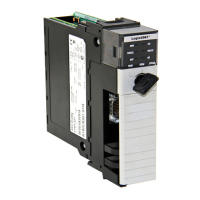338 Rockwell Automation Publication MOTION-RM003I-EN-P - February 2018
Command Velocity
Usage Access T Data
Type
Default Min Max Semantics of Values
Required - FPV
Get/
GSV
T REAL - - - Position Units / Sec
Tag access is supported but the
value is valid only when Auto Tag
Update of the Motion Group
Object is enabled.
The Command Velocity is the commanded speed and direction of an axis, in the
configured axis Position Units per second, as generated by any previous motion
instructions. It is calculated as the current increment to the command position per
coarse update interval. Command Velocity is a signed value—the sign (+ or -)
depends on which direction the axis is being commanded to move.
Command Velocity is a signed floating-point value. Its resolution does not depend
on the Averaged Velocity Timebase, but rather on the conversion constant of the
axis and the fact that the internal resolution limit on command velocity is 0.00001
feedback counts per coarse update.
Tag access supported but value is valid only when Auto Tag Update of the Motion
Group Object is enabled.
Command Acceleration
Usage Access T Data
Type
Default Min Max Semantics of Values
Required - FPV
Get/
GSV
T REAL - - - Position Units / Sec
2
Tag access is supported but the
value is valid only when Auto Tag
Update of the Motion Group
Object is enabled.
The Command Acceleration attribute is the commanded speed and direction of
an axis, in the configured axis Position Units per second per second, as generated
by any previous motion instructions. It is calculated as the current increment to
the command velocity per coarse update interval. Command Acceleration is a
signed value: the sign (+ or -) depends on which direction the axis is being
commanded to move.
Command Acceleration is a signed floating-point value. Its resolution does not
depend on the Averaged Velocity Timebase, but rather on the conversion constant
of the axis and the fact that the internal resolution limit on command velocity is
0.00001 feedback counts per Coarse Update Period
2
.
Tag access supported but value is valid only when Auto Tag Update of the Motion
Group Object is enabled.
